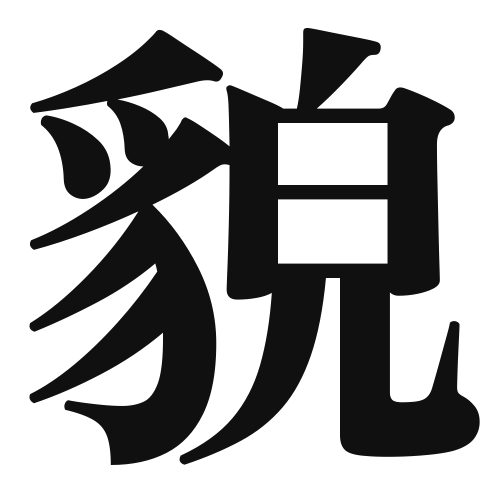1. Overview of Meaning
The kanji “貌” (bō) primarily means “appearance” or “face.” It refers to the outward look or expression of a person or thing, often emphasizing the visual aspect of someone’s features or demeanor.
2. Formation and Radical
The kanji “貌” is a compound character (会意文字) that combines two elements: the radical “亻” (which represents a person) and “貌” (which relates to the face or appearance). The radical “亻” indicates that the character is related to human beings.
3. Examples of Usage
Common words and phrases that include “貌” are:
- 貌美 (bōbi) – beautiful appearance
- 貌を変える (bō o kaeru) – to change one’s appearance
Example sentence in daily conversation:
「彼女はいつも貌が明るいですね。」
(She always has a bright appearance.)
4. Synonyms and Antonyms
Similar kanji with related meanings include:
- 顔 (kao) – face; while “顔” specifically refers to the face itself, “貌” encompasses a broader sense of appearance.
Antonyms include:
- 醜 (shū) – ugly; this kanji represents the opposite of beauty or attractiveness.
5. Cultural and Historical Background
The kanji “貌” has significant ties to Japanese culture, where appearance often plays a crucial role in social interactions. It is frequently used in proverbs and idiomatic expressions, such as:
- 貌は心の鏡 (bō wa kokoro no kagami) – “Appearance is a mirror of the heart,” suggesting that one’s outer look reflects their inner character.
This highlights the cultural belief in the connection between inner qualities and outward appearance.
